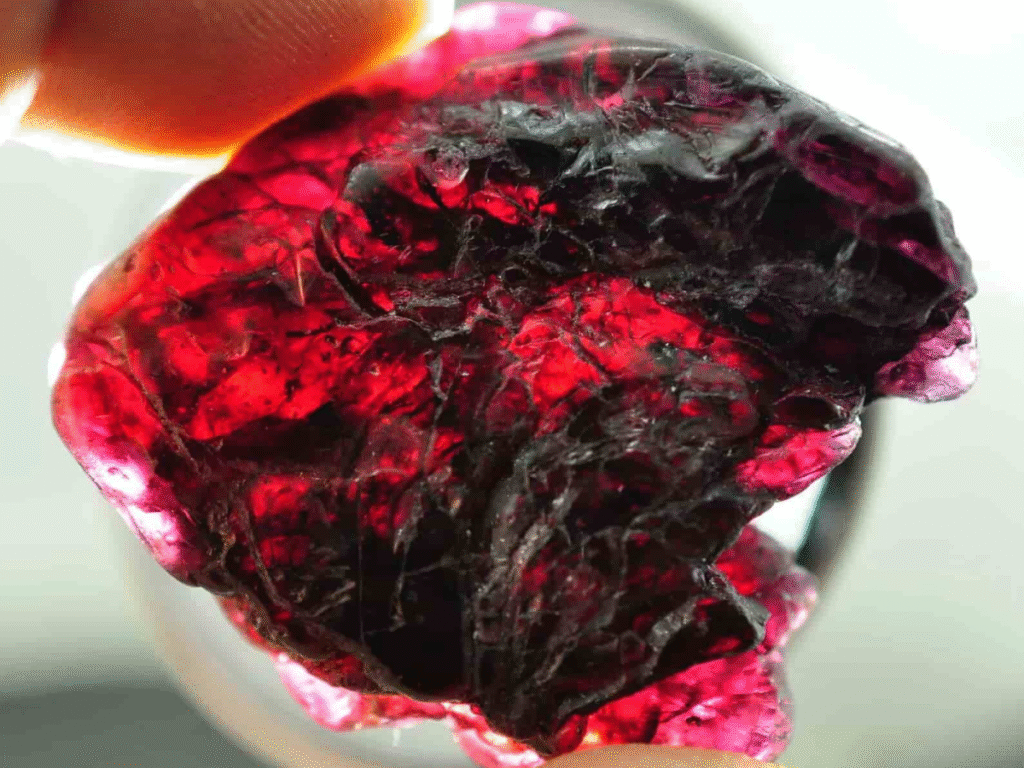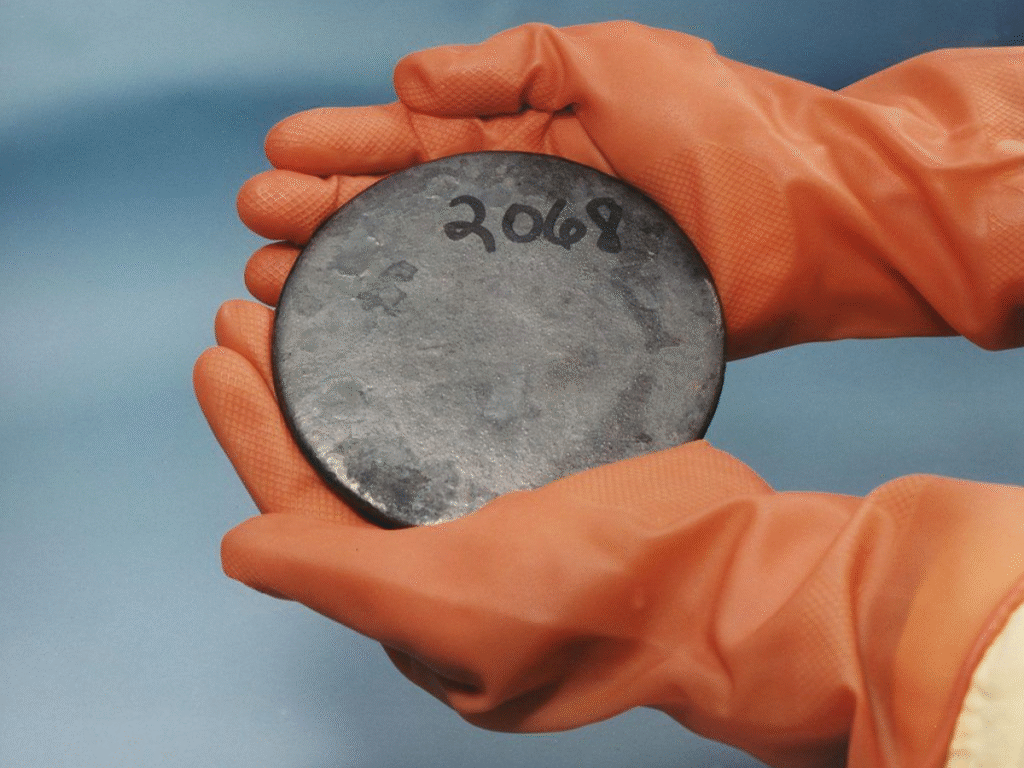From the hidden depths of the Earth to the laboratories where science expands the boundaries of imagination, some materials are worth far more than gold. Their prices soar not just because they’re rare, but because of the incredible power, beauty, or potential they possess. Diamonds and platinum have long been associated with wealth and prestige, while futuristic wonders like antimatter and californium sit at the forefront of discovery, promising to change how we think about energy and space travel.
These aren’t just commodities — they’re the world’s most sought-after treasures. Some shine brighter than any jewel, others can fuel spacecraft or transform entire industries. So, buckle up as we explore the 10 most expensive materials on Earth and discover what makes them so remarkably valuable.

When it comes to value, nothing on Earth—or in the universe, for that matter—can match antimatter. This mysterious substance is essentially the mirror opposite of normal matter, and when the two meet, they annihilate each other in a burst of pure energy. That makes antimatter not only rare but also incredibly powerful. Scientists believe it could one day be the ultimate fuel source, capable of powering spacecraft at unimaginable speeds or even revolutionizing energy production here on Earth.
The catch? Producing it is incredibly challenging. Currently, antimatter can only be generated in highly advanced particle accelerators, and even then, we’re dealing with fractions of a gram at astronomical costs. With a single gram valued at an astonishing $62.5 trillion, antimatter is the most expensive material in existence — and perhaps the most futuristic.

First synthesized in the 1950s, californium is one of the rarest and most valuable man-made elements on Earth. It doesn’t occur naturally in usable quantities and must be painstakingly produced in nuclear reactors, a process that explains its astronomical price of $27 million per gram. Despite the cost, californium has life-saving applications in cancer treatments, plays a crucial role in starting nuclear reactors, and is even used in devices that detect valuable resources like gold and oil, making it a material as powerful as it is scarce.

Long celebrated as symbols of wealth, beauty, and power, diamonds are among the most sought-after gemstones in history. Formed under intense pressure deep within the Earth over billions of years, these sparkling crystals are admired not only for their brilliance but also for their durability — making them essential in both luxury jewellery and high-precision industrial tools. With a value of approximately $55,000 per gram, diamonds continue to rank as one of the most expensive natural materials on Earth, blending timeless appeal with practical strength.

Tritium is a rare radioactive isotope of hydrogen that’s unlike anything you’ll find in a glass of water. What makes it special is its ability to glow when combined with phosphors, which is why it’s often used in self-powered lighting for items like wristwatches, emergency exit signs, and even aircraft instruments. That soft glow doesn’t require an external power source, making it invaluable in situations where reliability is essential.
But its true potential lies in the future. Scientists see tritium as a possible game-changer for nuclear fusion — the clean energy solution that could one day replace fossil fuels. Since tritium doesn’t occur in large quantities naturally, it must be painstakingly produced in nuclear reactors, pushing its value to around $30,000 per gram. Rare, functional, and potentially revolutionary, tritium sits at the crossroads of science and industry.

First identified in 1945 by gemologist Richard Taaffe, taaffeite is one of the rarest gemstones on Earth, often mistaken for spinel due to its similar appearance. Found only in small deposits in Sri Lanka, Tanzania, and Myanmar, this gem shines in delicate shades of violet, pink, and red, with optical qualities that make it stand out even among prized stones. Valued at around $20,000 per gram, taaffeite’s scarcity makes it more exclusive than most diamonds, turning every fragment into a collector’s treasure.

Once thought to be the rarest mineral in the world, painite is a deep brownish-red gemstone that puzzled scientists when it was first found in Myanmar in the 1950s. For many years, only a few crystals existed, making it practically priceless. Although more deposits have since been discovered, painite remains extremely rare, and its vibrant colours and unique crystal structure continue to attract collectors. With a value of around $9,000 per gram, this gem remains one of the most sought-after minerals for both scientists and jewellery lovers.

Plutonium is one of the most notorious substances on Earth, often associated with nuclear weapons and the Cold War period. Silvery in appearance but highly radioactive, it was first produced in the 1940s and rapidly became central to military arsenals and nuclear energy initiatives. Its capacity to release enormous amounts of energy makes it one of the most powerful and debated materials ever created.
But plutonium isn’t just about destruction; it also powers spacecraft through radioisotope thermoelectric generators, enabling missions that go far beyond the reach of solar energy. Since its production is heavily restricted and handling requires extreme precautions, every gram is extremely costly. Valued at about $4,000 per gram, plutonium’s price reflects both its rarity and the significant effort needed to produce, contain, and safely utilise it.

Rhino horn is one of the most controversial and tragic entries on this list, valued at around $110 per gram. Unlike gemstones or metals, it isn’t a mineral at all but is made of keratin — the same protein found in human hair and nails. Its high price comes from black market demand, driven by myths in traditional medicine and its use as a status symbol in some cultures. Sadly, this demand has fuelled rampant poaching, pushing several rhino species to the brink of extinction. While conservation efforts and strict international bans are fighting to curb the trade, the staggering value of rhino horn continues to make it one of the most costly — and heartbreaking — materials in the world.

This lustrous white metal has a reputation for being as tough as it is beautiful. Highly resistant to corrosion and tarnish, platinum has become a staple in industries that require strength, from catalytic converters in vehicles to precise medical instruments. At the same time, it remains a symbol of status in jewellery and luxury watches, often regarded as more exclusive than gold. With a value of around $60 per gram, platinum successfully combines luxury with technology, proving to be both practical and prestigious.

Shiny, silvery, and exceptionally rare, rhodium is one of the least abundant precious metals on Earth, which explains its high price of around $58 per gram. It’s highly resistant to corrosion and has a reflective brilliance that makes it ideal for use in jewellery, often as a finishing layer on white gold and platinum pieces. Beyond luxury, rhodium is vital in automotive catalytic converters, where it helps reduce harmful emissions. Its combination of scarcity, beauty, and industrial importance makes rhodium one of the most valuable metals in the modern world.
The world’s most expensive materials share three common traits: rarity, demand, and the difficulty of obtaining or producing them. Some, like diamonds and taaffeite, are formed over millions of years under extraordinary geological conditions, making each carat extremely rare. Others, like californium or antimatter, do not occur naturally in usable quantities at all — they must be synthesised in nuclear reactors or particle accelerators, which demand enormous amounts of energy, time, and resources. When supply is scarce and production is nearly impossible, the price naturally skyrockets.
On top of scarcity, demand plays a significant role. Platinum and rhodium are essential in modern industries like automotive manufacturing and medicine, while tritium and plutonium are crucial for energy and technology. Even rhino horn, despite being made of keratin, skyrockets in value because of illegal markets driven by cultural beliefs and status symbols. The more society needs or desires a material, the higher its value climbs, especially when alternatives are scarce.
It’s very likely. As science and technology continue to progress, new discoveries could push the boundaries of what we consider valuable today. Just as antimatter and californium arose from cutting-edge research rather than natural deposits, future breakthroughs in quantum computing, nanotechnology, or space exploration may introduce materials with properties we can barely imagine — and price tags to match. Whether mined from distant asteroids or manufactured in labs, the next “most expensive material” might not even exist yet, waiting for us to find it.
Have more questions you’d like to ask? Don’t worry, we’ve got you covered.
Which Material Is The Most Expensive In The World Right Now?
Antimatter ranks at the top by a significant margin, with an estimated cost of $62.5 trillion per gram. It’s so scarce and hard to produce that only small amounts have ever been created in labs, but its potential as a future energy source makes it invaluable in scientific terms.
Are All Expensive Materials Used In Luxury Products?
Not at all. While diamonds, platinum, and taaffeite dominate the world of jewellery and prestige, many of the most expensive materials serve scientific or industrial purposes. Tritium, californium, and plutonium, for example, are linked to energy, medicine, and research rather than luxury.
Could Prices Drop If More Of These Materials Are Discovered Or Produced?
Yes. History has shown that rarity often boosts price — painite was once nearly impossible to find, but as more deposits were discovered, its cost became a bit more accessible. Similarly, advances in technology could make producing or synthesizing some of these materials cheaper in the future, which would lower their market value.












